Here’s what you need to know about Angora bunny genetics to keep your Angora colours strong, while still breeding for the choicest colours.
When breeding Angora rabbits for colour, on your homestead, you need to have an understanding of basic Angora bunny genetics in order to ensure that you maintain the colour choices in your herd of Angora rabbits. Allow only your favourite colours to be bred and in a few seasons, you may find yourself bereft of choice. For instance, I saved a lilac male for breeding. Lilac at the time was a choice colour and fairly rare, being a recessive gene and so I thought that by using this buck for breeding, I would ensure that I wouldn’t lose this colour to the more dominant chocolate genetics. However, lilac began to show up more and more in my breedings and after 3 years black and chocolate became difficult to get in a litter. Here’s what you need to know to keep your angora colours strong in your litters, while still breeding for the choicest colours in your French Angora rabbits.
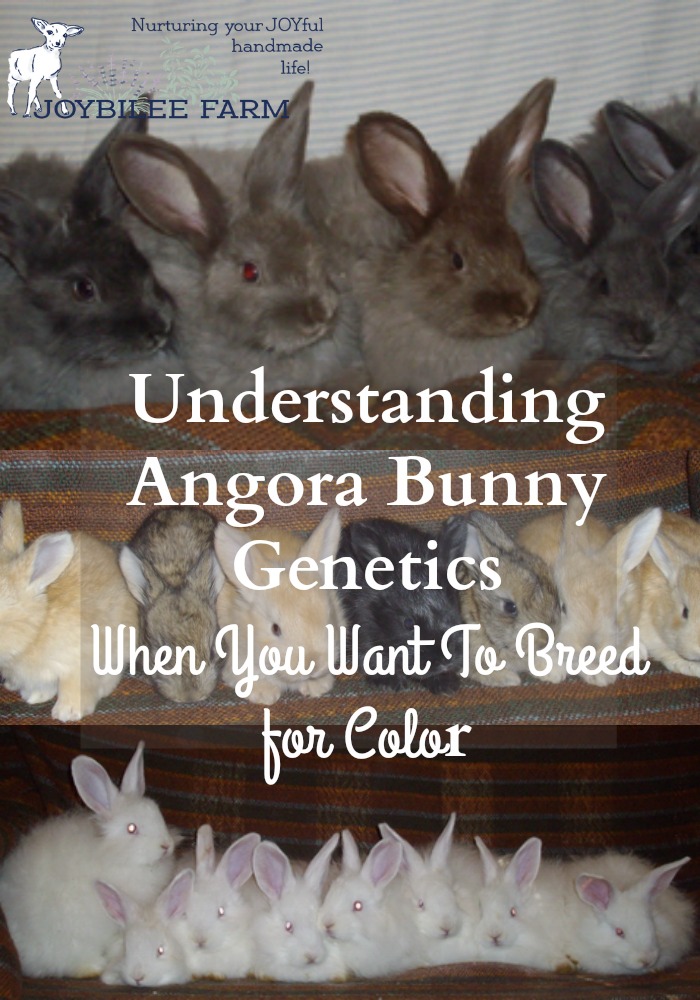
Angora Bunny Genetics and Adult Colours
There are several ARBA approved angora colours and they can be clearly defined into three main groups: White, Self and Agouti.
Angora Bunny Genetics: White Rabbits – the albino gene
White (aka Ruby Eyed White or REW) carries an albino gene. This gene masks the genetic makeup of the carrier rabbit so that its fur is pure white and its eye irises are ruby coloured — actually transparent so that you can see the blood vessels in the eye. The albino rabbit (Ruby Eyed White) will transfer its genetic makeup to its off Spring so looking at its litter will give you clues to its genetic makeup — if unknown.
The albino gene is recessive so both parents must be carriers for the offspring to be REW. When a REW and a REW breed — 100% of the off Spring are REW.
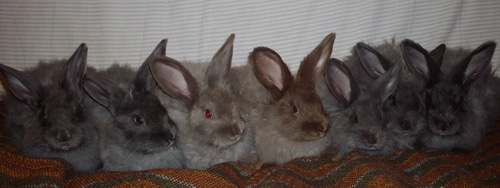
Angora Bunny Genetics – Self Rabbits:
A self rabbit is a solid coloured rabbit — Its face, back and stomach are the same colour. There are two basic colours in rabbits – Black and Chocolate. These two colours can be diluted to Blue and Lilac, respectively.
Black is the dominant gene. Blue is a dilute gene of the Black. Chocolate is the other self colour — recessive to black– and lilac is the dilute gene of the chocolate.
In breeding, with a chocolate and lilac rabbit, only chocolate and lilac colours can result in either selfs or tortes.
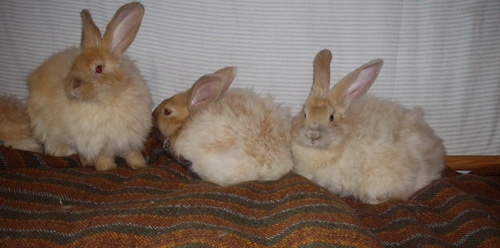
Tortes have a shaded gene that expresses itself in self rabbits. They look golden or fawn but have the shading of their self genetics on the face, ears and flanks. The shading isn’t obvious until 4 to 6 weeks of age.
For the greatest variety in the nest box in self rabbits, breeding of a black rabbit with a lilac rabbit will give black, blue, chocolate, and lilac babies as well as tortes in these self colours, and ruby eyed whites.
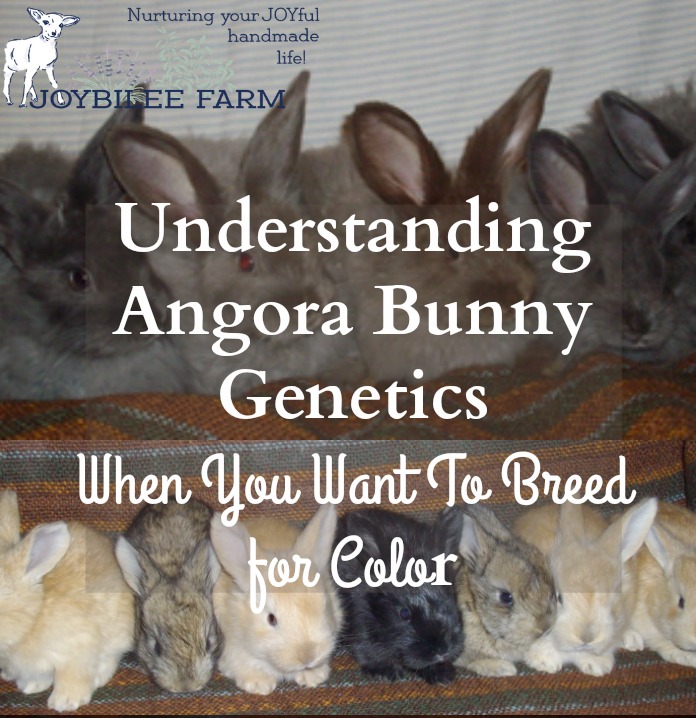
This breeding gives the greatest variety of natural angora colours for handspun yarns too — fawn, white, charcoal and warm grey from one breeding.
Angora rabbits molt 4 times each year and release their wonderful warm fibre to be groomed from them. A french angora rabbit will provide approx. 450 grams of prime groomed angora fibre each year — enough for a shawl or light sweater.
This is part of a series of posts on Angora Rabbits 101:
Part 1 -When Fluffy Bunny Becomes Matted
Part 2 -6 steps to dealing with Sore hocks in your Angora Rabbits
Part 3 – Feeding your Angora Rabbits organically
Part 4 – Breeding for colour: Understanding Angora Bunny Genetics: The self rabbit
Part 5 – Angora Bunny Genetics: The wild rabbit colouring
Part 6 – Angora Bunny Genetics: The Shaded Gene

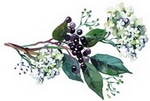


If I bred an REW female English angora with a chocolate male English angora what will the babies look like?
I am interested in the wool gene. I know it is recessive, but I have a rabbit (doe) that is 50% Satin Angora and 50% Angora lionshead (no wool), I also have a beautiful buck English Angora and am considering breeding them for my own fiber use. What are the chances that babies with 75% Angora Wool genes would be woolly? Would I be likely to get a mix of woolly and non-woolly bunnies in a litter?
Thanks!
It depends on the genetics of the parents. There is more to genetics than just color. Are they agouti, spotted, or shaded?
question :
I have french angora
male is white grey mix and female is black white mix… what will be baby colours?
Informative article..